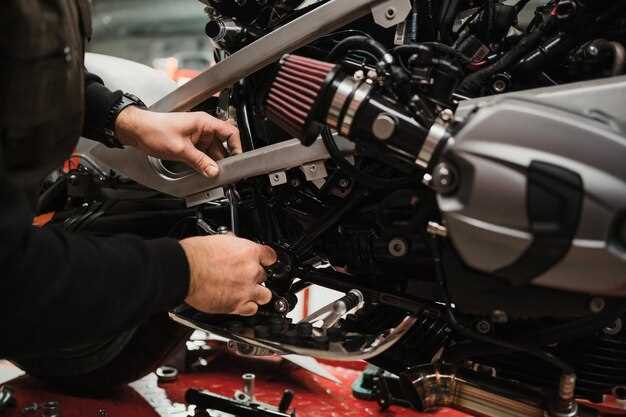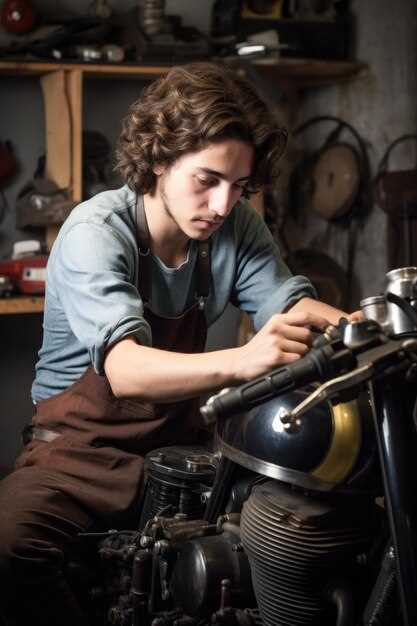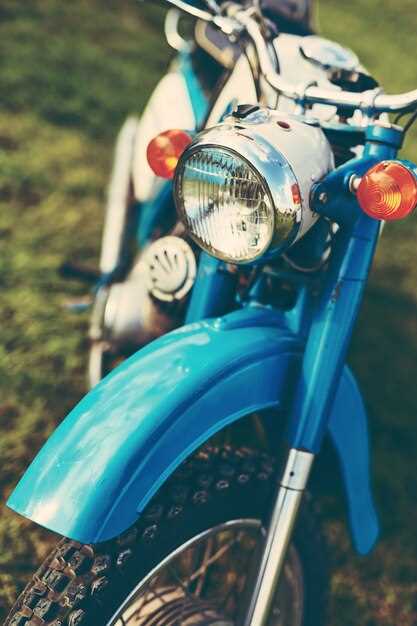
Restoring a classic motorcycle is not merely a project; it’s a journey into the nostalgic world of vintage engineering. Whether you’ve inherited a well-worn ride or stumbled upon a hidden gem in a garage sale, the process of repair holds an undeniable allure for enthusiasts and hobbyists alike. A successful restoration demands not just passion but also an understanding of the unique challenges that come with these iconic machines.
One of the first steps in your restoration adventure is to thoroughly assess the condition of the motorcycle. Classic models often require careful attention to detail, as age and wear can affect everything from the chassis to the engine. By identifying the specific areas that need repair, you can create a comprehensive restoration plan that respects the bike’s heritage while ensuring reliable performance. Remember, each vintage motorcycle has its own story, and preserving it is key to bringing that narrative back to life.
Over the course of this guide, we will explore essential techniques for restoring your classic motorcycle, including sourcing authentic parts, understanding mechanical systems, and applying the finishing touches that will make your bike stand out. Whether you aim for a full restoration or a personalized touch, the end goal remains the same: to breathe life back into a piece of history that deserves to be celebrated on the open road. Let’s embark on this exciting journey together!
Assessing the Condition of Your Vintage Motorcycle Before Restoration
Before diving into the restoration process, it’s crucial to thoroughly assess the condition of your vintage motorcycle. A comprehensive evaluation will help you identify necessary repairs and determine the scale of the restoration project. Start by inspecting the frame, which is the backbone of your motorcycle. Look for any signs of rust, cracks, or misalignments that could affect performance and safety.
Next, examine the engine. Check for leaks, unusual noises, and the overall state of the components. An engine in poor condition may require extensive repair or even replacement, significantly impacting your restoration budget. Pay attention to the electrical system as well; vintage motorcycles often have outdated wiring that might pose safety concerns.
Another vital aspect to consider is the condition of the wheels and tires. Inspect the rims for dents and the tires for wear. If these parts are damaged, it may lead to dangerous riding conditions. Furthermore, evaluate the brakes; worn-out braking systems can be a major safety hazard and may necessitate a complete overhaul.
Don’t forget to assess the motorcycle’s bodywork and paint. Deteriorated paint or rusted body panels can detract from the overall aesthetic appeal. Decide whether you want to repair and repaint or replace these components. Remember that maintaining the authenticity of the vintage style is often a priority for classic bike enthusiasts.
Lastly, document your findings. Create a detailed list of repairs and restorations necessary for each component. This will serve as a roadmap for your project, helping you allocate resources and time effectively. By carefully assessing the condition of your vintage motorcycle before beginning restoration, you set the foundation for a successful and rewarding project.
Finding Authentic Parts and Resources for Motorcycle Repair

When undertaking the restoration of a vintage motorcycle, sourcing authentic parts is crucial for maintaining its integrity and value. Start by identifying the specific parts needed for your motorcycle’s repair. Utilize online databases and resources dedicated to classic vehicles, which often have comprehensive lists of original equipment manufacturer (OEM) parts. These websites may also provide maintenance manuals and historical information about your model, aiding in accurate restoration.
Local motorcycle clubs and communities can be invaluable in your search for parts. Engaging with fellow enthusiasts allows you to exchange information, access leads on hard-to-find components, and sometimes even purchase parts directly from other members. Attending vintage motorcycle shows or swap meets is another effective way to connect with vendors who specialize in authentic parts and accessories.
Online marketplaces, such as eBay and specialized classic motorcycle websites, frequently offer a variety of used and refurbished components. Always examine seller ratings and reviews to ensure you are purchasing from a reputable source. Additionally, consider joining forums where members share their experiences and recommendations for trusted retailers and suppliers.
Collaboration with restoration shops that specialize in vintage motorcycles is another option. These shops often have established relationships with reliable part suppliers and can help you procure authentic components tailored to your needs. They possess the expertise to assess the condition of parts and may offer custom fabrication services, ensuring that the repairs adhere to the standards of vintage restoration.
Lastly, keep an eye on antique shops and estate sales, which can sometimes feature hidden gems. Such venues may offer vintage parts or manuals that can greatly assist in your restoration efforts. Being resourceful and persistent in your search will enhance the overall quality of your restoration project, helping you bring your classic motorcycle back to life with genuine authenticity.
Techniques for Preserving Original Features During Restoration

Restoring a vintage motorcycle requires a careful balance between bringing the bike back to life and retaining its original charm. To achieve successful restoration while preserving original features, consider the following techniques:
1. Document the Original Condition: Before beginning any restoration work, thoroughly document the motorcycle’s original features. Take detailed photographs of each component, noting specific markings, finishes, and colors. This reference material will guide you throughout the restoration process.
2. Clean, Don’t Replace: Whenever possible, aim to clean and refurbish original parts instead of replacing them. Deep cleaning using appropriate methods can often restore the aesthetic of vintage components without compromising their authenticity. Use gentle cleaners to avoid damaging original finishes.
3. Use OEM Parts: If replacement parts are necessary, opt for Original Equipment Manufacturer (OEM) parts. These components are designed to match the specifications of the original parts, ensuring that the motorcycle retains its vintage integrity and performance.
4. Repair Versus Replace: Evaluate each component critically. Many parts can be repaired rather than replaced, whether it’s re-chroming a rusted area, fixing a cracked frame, or restoring original upholstery. Always consider restoration as the first option before opting for complete part replacement.
5. Maintain Original Patina: Original patina can add character and value to vintage motorcycles. Rather than stripping away the natural wear and tear, clean and preserve these features, making sure not to alter their appearance significantly.
6. Seek Expert Assistance: If unsure about how to preserve specific features, consult experts or vintage motorcycle clubs. Their insights can provide valuable guidance and introduce you to resources that specialize in authentic restoration practices.
7. Be Patient: Successful restoration takes time. Rushing through the process can lead to irreversible changes. Allow sufficient time to source original components and make careful decisions that honor the motorcycle’s heritage.
By employing these techniques, you can ensure that your restoration project honors the history of your vintage motorcycle while reviving its functionality and aesthetic appeal.
